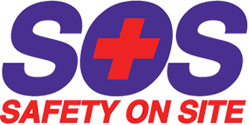Joella, a 12-year old competitive cheerleader, was at practice recently when she fell from her pyramid stunt. Her coaches assessed her, looking for signs of injury. Joella complained of a headache so the coaches suggested that she sit out for the remainder of practice. While the music for the cheer routine played, Joella winced, as if to say the music was too loud.
The next day, Joella felt much better and dismissed the fall in practice entirely. She went about her daily routines as usual.
Later that same week, Joella was chatting with a friend as she was walking down the hall at school. She accidently bumped into another student, hitting her head. Everyone laughed at the incident and continued on down the hall to their next class.
Soon afterwards, Joella developed a headache, became dizzy, sensitive to light and felt nauseous. She went home from school early. The nausea developed into vomiting. Joella’s parents began to worry and immediately took her to the hospital where the doctor diagnosed her with a concussion. Joella was admitted and kept overnight for observation. Additionally, medical staff advised Joella’s parents that she should refrain from all high-risk activities – including cheerleading – for the next four weeks. Joella would miss the final competition of the year and her team’s chance at the national title was now over.
Joella’s parents were completely thrown off. How could she suffer a concussion from such a minor bump on the head?
The word concuss is Latin for “rattle”. When someone suffers a concussion, it means their brain has rattled inside the skull causing damage to the brain. We are hearing more and more about concussion in the news, thanks to the spotlight on several professional athletes. But we still don’t fully get the message about concussions.
MYTH #1
Concussion is only identified if there is loss of consciousness or definable memory loss.
FALSE. While these are definite signs of concussion, there is a long list of signs and symptoms including headache, drowsiness, change in behaviour, change in mood (sadness in particular), sensitivity to light and/or noise, loss of balance, and more. A comprehensive tool known as SCAT (Sport Concussion Assessment Tool) includes these and other things to look for.
MYTH #2
A concussion cannot happen unless there is a forceful blow to the head.
FALSE. A concussion happens when the brain hits the inside of the skull. An external blow is not always necessary for concussion to occur. Sudden stops, as in the case of a car accident where the person is restrained by a seatbelt, can result in concussion. Furthermore, the impact of a direct hit is not always an indicator. In Joella’s case, a minor impact triggered a more serious concussion because her original injury had not fully healed.
MYTH #3
If someone gets their “bell rung”, meaning they sustained a head injury that caused them to see stars for a moment, they should sit out for a while but can return to normal activities the next day.
FALSE. When concussion happens, it is imperative to protect the brain from further injury until enough time has been given to heal. Experts have differing opinions on how long this may take, but all agree that one week is the minimum amount of time to avoid all activities and get plenty of rest. The best advice is to seek medical attention whenever concussion is suspected and rely on the expert opinion of your medical professional.
Concussion has often been called the invisible injury. It is impossible to see the damage in the brain without powerful diagnostic testing. Parents, coaches and athletes need to learn to recognize the signs of concussion and when these signs are apparent, so that we can protect that precious grey matter. While it is a big disappointment to Joella and her team that she can’t compete at this year’s Cheer National competition, there will be more competitions – but Joella needs to take care of her brain. She’ll need it for life.






